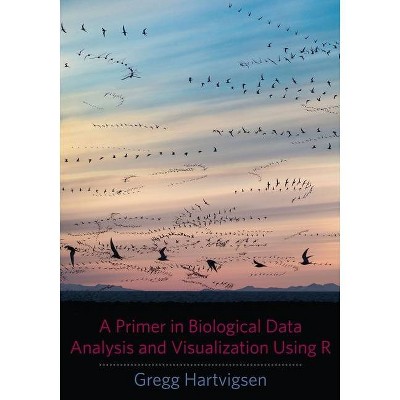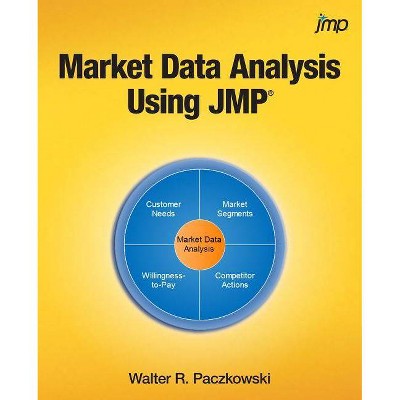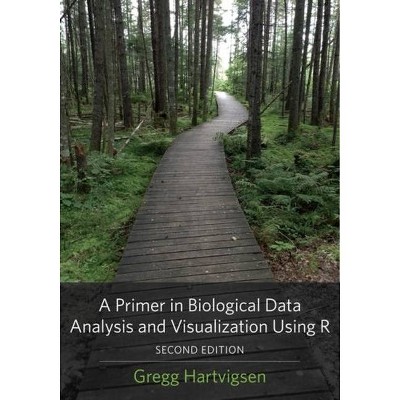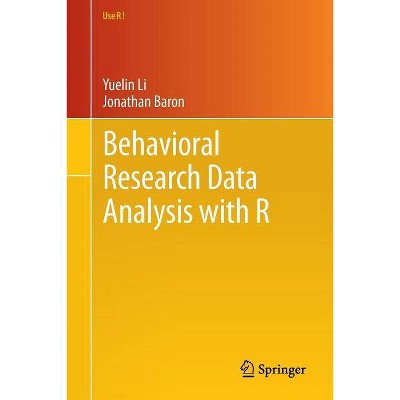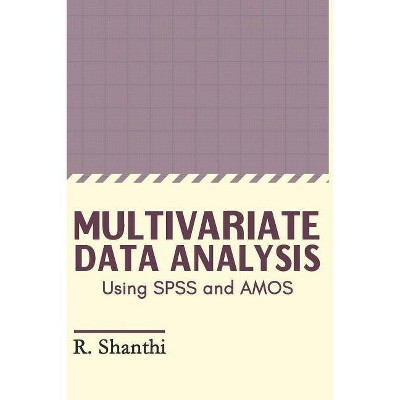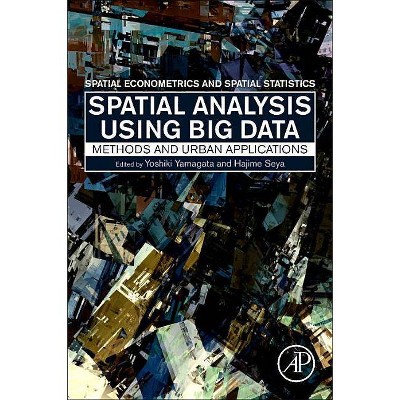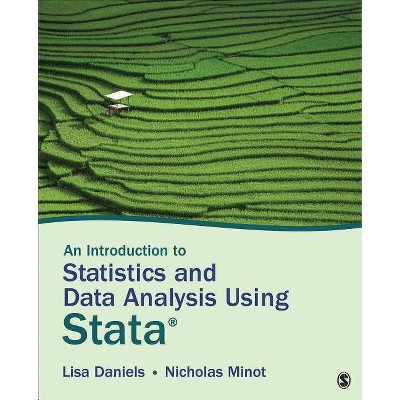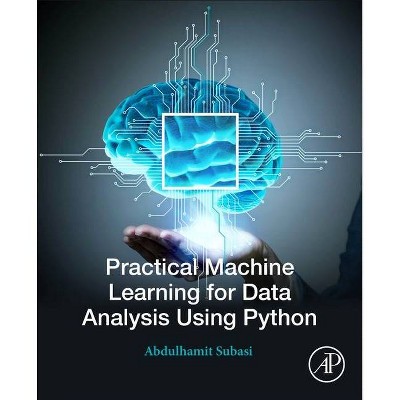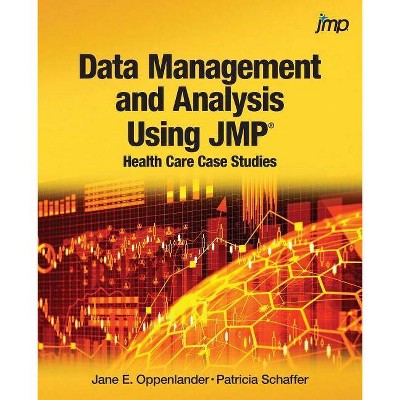Primer to Analysis of Genomic Data Using R - (Use R!) by Cedric Gondro (Paperback)
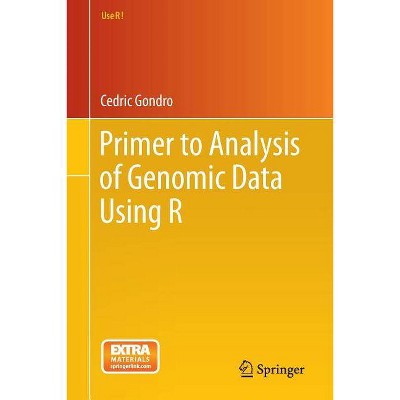
Similar Products
Products of same category from the store
AllProduct info
<p/><br></br><p><b> Book Synopsis </b></p></br></br><p>Through this book, researchers and students will learn to use R for analysis of large-scale genomic data and how to create routines to automate analytical steps. The philosophy behind the book is to start with real world raw datasets and perform all the analytical steps needed to reach final results. Though theory plays an important role, this is a practical book for graduate and undergraduate courses in bioinformatics and genomic analysis or for use in lab sessions. How to handle and manage high-throughput genomic data, create automated workflows and speed up analyses in R is also taught. A wide range of R packages useful for working with genomic data are illustrated with practical examples. </p> <p>The key topics covered are association studies, genomic prediction, estimation of population genetic parameters and diversity, gene expression analysis, functional annotation of results using publically available databases and how to work efficiently in R with large genomic datasets. Important principles are demonstrated and illustrated through engaging examples which invite the reader to work with the provided datasets. Some methods that are discussed in this volume include: signatures of selection, population parameters (LD, FST, FIS, etc); use of a genomic relationship matrix for population diversity studies; use of SNP data for parentage testing; snpBLUP and gBLUP for genomic prediction. Step-by-step, all the R code required for a genome-wide association study is shown: starting from raw SNP data, how to build databases to handle and manage the data, quality control and filtering measures, association testing and evaluation of results, through to identification and functional annotation of candidate genes. Similarly, gene expression analyses are shown using microarray and RNAseq data. </p> <p>At a time when genomic data is decidedly big, the skills from this book are critical. In recent years R has become the de facto <p> </p> <p></p><p/><br></br><p><b> From the Back Cover </b></p></br></br><p>Through this book, researchers and students will learn to use R for analysis of large-scale genomic data and how to create routines to automate analytical steps. The philosophy behind the book is to start with <i>real world raw datasets </i>and perform all the analytical steps needed to reach final results. Though theory plays an important role, this is a practical book for advanced undergraduate and graduate classes in bioinformatics, genomics and statistical genetics or for use in lab sessions. This book is also designed to be used by students in computer science and statistics who want to learn the practical aspects of genomic analysis without delving into algorithmic details. The datasets used throughout the book may be downloaded from the publisher's website.</p><p> Chapters show how to handle and manage high-throughput genomic data, create automated workflows and speed up analyses in R. A wide range of R packages useful for working with genomic data are illustrated with practical examples. In recent years R has become the <i>de facto </i>tool for analysis of gene expression data, in addition to its prominent role in the analysis of genomic data. Benefits to using R include the integrated development environment for analysis, flexibility and control of the analytic workflow. </p><p> At a time when genomic data is decidedly <i>big</i>, the skills from this book are critical. The key topics covered are association studies, genomic prediction, estimation of population genetic parameters and diversity, gene expression analysis, functional annotation of results using publically available databases and how to work efficiently in R with large genomic datasets. Important principles are demonstrated and illustrated through engaging examples which invite the reader to work with the provided datasets. Some methods that are discussed in this volume include: signatures of selection; population parameters (LD, F<sub>ST</sub>, F<sub>IS</sub>, etc); use of a genomic relationship matrix for population diversity studies; use of SNP data for parentage testing; <i>snpBLUP </i>and <i>gBLUP </i>for genomic prediction. Step-by-step, all the R code required for a genome-wide association study is shown: starting from raw SNP data, how to build databases to handle and manage the data, quality control and filtering measures, association testing and evaluation of results, through to identification and functional annotation of candidate genes. Similarly, gene expression analyses are shown using microarray and RNAseq data. </p><p> </p><p></p><p/><br></br><p><b> Review Quotes </b></p></br></br><br><p>"The book is timely and practical, not only through its approach on data analysis, but also due to the numerous examples and further reading indications (including R packages and books) at the end of each chapter. The targeted audience consists of undergraduates and graduates with some experience in bioinformatics analyses. ... the style of the book can accommodate also researchers with a computing or biological background." (Irina Ioana Mohorianu, zbMATH 1327.92002, 2016)</p><br><p/><br></br><p><b> About the Author </b></p></br></br><p><b>Cedric Gondro</b> is Associate Professor of computational genetics at the University of New England. He has extensive experience in analysis of livestock projects using data from various genomic platforms. His main research interests are in the development of computational methods for optimization of biological problems; statistical and functional analysis methods for high throughput genomic data (expression arrays, SNP chips, sequence data); estimation of population genetic parameters using genome-wide data; and simulation of biological systems. </p>
Price History
Price Archive shows prices from various stores, lets you see history and find the cheapest. There is no actual sale on the website. For all support, inquiry and suggestion messages communication@pricearchive.us
